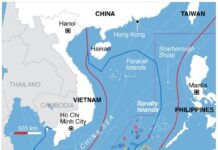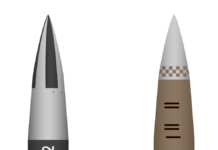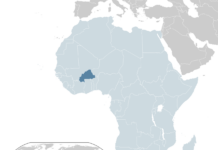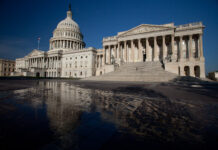Overnight an Israeli strike targeted Iranian soil, in response to a direct military assault by Iran, which used drones and missiles in a large-scale attack on Israeli territory. This cycle of retaliation highlights the unstable situation that could potentially broaden into a wider regional conflict.
The Israeli action in Iran was a strategic strike, following Iran’s aggressive drone and missile attack. Iran’s attack was a response to a previous Israeli strike on an Iranian diplomatic facility in Syria, which resulted in the death of two high-ranking officials. These back-and-forth strikes have accentuated an already tense relationship between the two nations, marked by their longstanding antagonistic stances and indirect confrontations across the region.
Israeli officials maintained a low profile following their latest military operation, neither confirming nor elaborating on the details of the strike. Similarly, Iran’s official response was initially subdued, with state media downplaying the impact of the strike. Iran’s air defense was reported to have intercepted three drones, preventing extensive damage.
This exchange occurs amidst a broader context of international concern. The United States and other global powers have been involved, albeit indirectly, emphasizing restraint to both parties to avoid a major escalation. The U.S. was notified of the Israeli strike beforehand, indicating some level of communication between Israel and its key ally, despite the U.S. not endorsing the strike.
On the ground in Iran, particularly around the city of Isfahan, where air defenses were activated, the situation remained tense but controlled. Iranian media and officials stressed that critical infrastructure, including nuclear facilities, remained secure and unharmed. The public depiction of normalcy in Isfahan, with routine activities resuming swiftly, was part of a broader attempt to convey resilience and minimize the perceived impact of the Israeli strike.
The unfolding events are part of a broader narrative of heightened military readiness and action in the region, which includes various players and overlapping interests. The presence of powerful militias, ongoing military operations in neighboring countries like Syria, and the strategic significance of areas like Gaza and the Golan Heights add layers of complexity to the Iran-Israel dynamic.
Furthermore, the international community remains keenly aware of the potential for these incidents to trigger a broader conflict, which could destabilize an already fragile region. Calls for restraint and diplomatic engagement are ongoing, as global leaders like the UN Secretary-General urge all parties involved to consider the severe repercussions of further military escalation.
The recent military actions emphasize the fragility of regional peace and the potential for rapid escalation. As both Israel and Iran assess their next moves, the international community watches closely, hoping that dialogue might prevail over further military action, thus averting a deeper crisis that could have far-reaching consequences.
Map is a map of Iran. On the map, the red dot represents the city of Isfahan.
Image is licensed under the Creative Commons Attribution-Share Alike 4.0 International license and was created by Parsa 2au.









